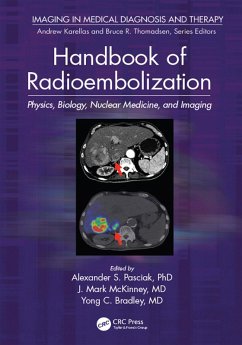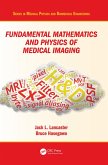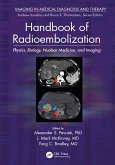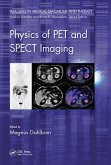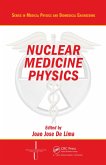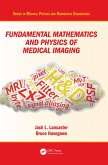Handbook of Radioembolization (eBook, PDF)
Physics, Biology, Nuclear Medicine, and Imaging
Redaktion: Pasciak, Alexander S.; McKinney MD., J. Mark; Bradley MD., Yong
47,95 €
47,95 €
inkl. MwSt.
Sofort per Download lieferbar

24 °P sammeln
47,95 €
Als Download kaufen

47,95 €
inkl. MwSt.
Sofort per Download lieferbar

24 °P sammeln
Jetzt verschenken
Alle Infos zum eBook verschenken
47,95 €
inkl. MwSt.
Sofort per Download lieferbar
Alle Infos zum eBook verschenken

24 °P sammeln
Handbook of Radioembolization (eBook, PDF)
Physics, Biology, Nuclear Medicine, and Imaging
Redaktion: Pasciak, Alexander S.; McKinney MD., J. Mark; Bradley MD., Yong
- Format: PDF
- Merkliste
- Auf die Merkliste
- Bewerten Bewerten
- Teilen
- Produkt teilen
- Produkterinnerung
- Produkterinnerung

Bitte loggen Sie sich zunächst in Ihr Kundenkonto ein oder registrieren Sie sich bei
bücher.de, um das eBook-Abo tolino select nutzen zu können.
Hier können Sie sich einloggen
Hier können Sie sich einloggen
Sie sind bereits eingeloggt. Klicken Sie auf 2. tolino select Abo, um fortzufahren.

Bitte loggen Sie sich zunächst in Ihr Kundenkonto ein oder registrieren Sie sich bei bücher.de, um das eBook-Abo tolino select nutzen zu können.
Radioembolization is now the preferred treatment for both primary and secondary liver cancer. This handbook addresses the radiation biology, physics, nuclear medicine, and imaging for radioembolization using Yttrium-90 (90Y) microspheres, in addition to discussing aspects related to interventional radiology. The contents reflect new on-label hepatic treatment indications, both in the US and worldwide, as well as dose-response relationships associated with radioembolization and the utility of adjuvant radioembolization and systemic chemotherapy.
- Geräte: PC
- mit Kopierschutz
- eBook Hilfe
- Größe: 66.96MB
Andere Kunden interessierten sich auch für
![Fundamental Mathematics and Physics of Medical Imaging (eBook, PDF) Fundamental Mathematics and Physics of Medical Imaging (eBook, PDF)]() Jack LancasterFundamental Mathematics and Physics of Medical Imaging (eBook, PDF)47,95 €
Jack LancasterFundamental Mathematics and Physics of Medical Imaging (eBook, PDF)47,95 €![Handbook of Radioembolization (eBook, ePUB) Handbook of Radioembolization (eBook, ePUB)]() Handbook of Radioembolization (eBook, ePUB)47,95 €
Handbook of Radioembolization (eBook, ePUB)47,95 €![Physics of PET and SPECT Imaging (eBook, PDF) Physics of PET and SPECT Imaging (eBook, PDF)]() Physics of PET and SPECT Imaging (eBook, PDF)47,95 €
Physics of PET and SPECT Imaging (eBook, PDF)47,95 €![Tutorials in Radiotherapy Physics (eBook, PDF) Tutorials in Radiotherapy Physics (eBook, PDF)]() Patrick N. McDermottTutorials in Radiotherapy Physics (eBook, PDF)100,95 €
Patrick N. McDermottTutorials in Radiotherapy Physics (eBook, PDF)100,95 €![Nuclear Medicine Physics (eBook, PDF) Nuclear Medicine Physics (eBook, PDF)]() Nuclear Medicine Physics (eBook, PDF)60,95 €
Nuclear Medicine Physics (eBook, PDF)60,95 €![Cancer Risk Assessment (eBook, PDF) Cancer Risk Assessment (eBook, PDF)]() Samuel C. MorrisCancer Risk Assessment (eBook, PDF)63,95 €
Samuel C. MorrisCancer Risk Assessment (eBook, PDF)63,95 €![Fundamental Mathematics and Physics of Medical Imaging (eBook, ePUB) Fundamental Mathematics and Physics of Medical Imaging (eBook, ePUB)]() Jack LancasterFundamental Mathematics and Physics of Medical Imaging (eBook, ePUB)47,95 €
Jack LancasterFundamental Mathematics and Physics of Medical Imaging (eBook, ePUB)47,95 €-
-
-
Radioembolization is now the preferred treatment for both primary and secondary liver cancer. This handbook addresses the radiation biology, physics, nuclear medicine, and imaging for radioembolization using Yttrium-90 (90Y) microspheres, in addition to discussing aspects related to interventional radiology. The contents reflect new on-label hepatic treatment indications, both in the US and worldwide, as well as dose-response relationships associated with radioembolization and the utility of adjuvant radioembolization and systemic chemotherapy.
Dieser Download kann aus rechtlichen Gründen nur mit Rechnungsadresse in A, B, BG, CY, CZ, D, DK, EW, E, FIN, F, GR, HR, H, IRL, I, LT, L, LR, M, NL, PL, P, R, S, SLO, SK ausgeliefert werden.
Produktdetails
- Produktdetails
- Verlag: Taylor & Francis
- Seitenzahl: 348
- Erscheinungstermin: 3. November 2016
- Englisch
- ISBN-13: 9781498742023
- Artikelnr.: 47134600
- Verlag: Taylor & Francis
- Seitenzahl: 348
- Erscheinungstermin: 3. November 2016
- Englisch
- ISBN-13: 9781498742023
- Artikelnr.: 47134600
- Herstellerkennzeichnung Die Herstellerinformationen sind derzeit nicht verfügbar.
Alexander S. Pasciak, PhD, earned a BS in electrical engineering at the University of Washington, MS in health physics and PhD in nuclear engineering at Texas A&M University. In 2010, Dr. Pasciak completed a 2-year diagnostic medical physics residency at the University of Texas MD Anderson Cancer Center after which he worked for 5 years as a diagnostic medical physicist at the University of Tennessee Medical Center in Knoxville, Tennessee. Dr. Pasciak maintains a position as an associate professor of radiology at the University of Tennessee and is concurrently pursuing his MD degree at the Johns Hopkins University School of Medicine in Baltimore, Maryland. Dr. Pasciak is active in multiple research endeavors in the fields of interventional radiology and medical physics, and he has published papers in high impact journals. Dr. Pasciak has published 35 articles in peer-reviewed medical journals, presented 62 research abstracts at national meetings, has written 6 book chapters, and has filed 2 patents. He currently serves as principal investigator on three externally funded research grants involving radioembolization. Dr. Pasciak is certified by the American Board of Radiology (ABR) in diagnostic medical physics and is Mammography Quality Standards Act (MQSA) qualified. J. Mark McKinney, MD, earned a medical degree at Loma Linda University School of Medicine in California where he completed a diagnostic radiology residency and interventional radiology fellowship. Dr. McKinney joined the Mayo Clinic in 1993. While at Mayo Clinic in Jacksonville, Florida, he developed the interventional radiology fellowship, mentored residents, made numerous presentations, and authored more than 60 peer-reviewed articles, abstracts, and book chapters. From 2008 to 2012 Dr. McKinney was Chair of Radiology at the University of Tennessee Medical Center and initiated the University of Tennessee interventional oncology radioembolization program. Dr. McKinney returned to Mayo Clinic in 2012 and is serving as Chair of Radiology. Dr. McKinney is an associate professor of radiology in the Mayo Clinic College of Medicine. Dr. McKinney is a recent past president of the Association of Program Directors in Radiology and is involved in the new interventional radiology residency program. Yong C. Bradley, MD, is an ABNM and ABR-certified nuclear medicine subspecialist at the University of Tennessee Medical Center in Knoxville, Tennessee. He completed his residency training in radiology at Tripler Army Medical Center in Honolulu, Hawaii, and subsequently completed a 2-year fellowship in nuclear medicine at Brooke Army Medical Center in San Antonio, Texas. Dr. Bradley is a former chief of radiology and nuclear medicine and molecular imaging at the Brooke Army Medical Center, Wilford Hall Medical Center, and San Antonio Military Medical Center. Dr. Bradley has been interested in cancer imaging and therapy for over 20 years. He has been involved in positron emission tomography (PET) and PET/computed tomography (CT) imaging since 1998, when he was first introduced to PET along with radioimmunotherapy. Presently, his interest has been concentrated in liver radioembolization.
INTRODUCTION. Introduction to radioembolization for the treatment of
non-resectable liver cancer. PATIENT SELECTION AND TREATMENT PLANNING.
Treatment options for patients with primary and secondary liver cancer: An
overview of invasive, minimally invasive and non-invasive techniques.
Treatment planning part I: Vascular considerations. Treatment planning part
II: Procedure simulation using 99mTc-MAA. Treatment planning part III:
Dosimetric considerations in conventional lobar therapy. Treatment planning
part IV: Radioembolization in segmentectomy, lobectomy and future liver
remnant hypertrophy. TREATING PATIENTS WITH RADIOEMBOLIZATION. Radiation
safety concerns associated with preparing the dose, treating and releasing
the patient and managing radioactive waste. The radiation biology of
radioembolization. Glass and resin microspheres: An analysis on a
microscopic and macroscopic level. FOLLOWING PATIENTS TREATED WITH
RADIOEMBOLIZATION. Quantitative post-radioembolization imaging using
Bremsstrahlung SPECT. Quantitative post-radioembolization imaging using
PET/CT. Image-based 3-dimensional dosimetry following radioembolization.
Diagnostic reporting using post-radioembolization imaging. Using
post-treatment imaging in the medical management of patients treated with
radioembolization. The potential utility of serial therapy in
radioembolization: A radiation biology analysis. NEW HORIZONS. Future
directions in radioembolization for intrahepatic and extrahepatic treatment
of disease
non-resectable liver cancer. PATIENT SELECTION AND TREATMENT PLANNING.
Treatment options for patients with primary and secondary liver cancer: An
overview of invasive, minimally invasive and non-invasive techniques.
Treatment planning part I: Vascular considerations. Treatment planning part
II: Procedure simulation using 99mTc-MAA. Treatment planning part III:
Dosimetric considerations in conventional lobar therapy. Treatment planning
part IV: Radioembolization in segmentectomy, lobectomy and future liver
remnant hypertrophy. TREATING PATIENTS WITH RADIOEMBOLIZATION. Radiation
safety concerns associated with preparing the dose, treating and releasing
the patient and managing radioactive waste. The radiation biology of
radioembolization. Glass and resin microspheres: An analysis on a
microscopic and macroscopic level. FOLLOWING PATIENTS TREATED WITH
RADIOEMBOLIZATION. Quantitative post-radioembolization imaging using
Bremsstrahlung SPECT. Quantitative post-radioembolization imaging using
PET/CT. Image-based 3-dimensional dosimetry following radioembolization.
Diagnostic reporting using post-radioembolization imaging. Using
post-treatment imaging in the medical management of patients treated with
radioembolization. The potential utility of serial therapy in
radioembolization: A radiation biology analysis. NEW HORIZONS. Future
directions in radioembolization for intrahepatic and extrahepatic treatment
of disease
INTRODUCTION. Introduction to radioembolization for the treatment of
non-resectable liver cancer. PATIENT SELECTION AND TREATMENT PLANNING.
Treatment options for patients with primary and secondary liver cancer: An
overview of invasive, minimally invasive and non-invasive techniques.
Treatment planning part I: Vascular considerations. Treatment planning part
II: Procedure simulation using 99mTc-MAA. Treatment planning part III:
Dosimetric considerations in conventional lobar therapy. Treatment planning
part IV: Radioembolization in segmentectomy, lobectomy and future liver
remnant hypertrophy. TREATING PATIENTS WITH RADIOEMBOLIZATION. Radiation
safety concerns associated with preparing the dose, treating and releasing
the patient and managing radioactive waste. The radiation biology of
radioembolization. Glass and resin microspheres: An analysis on a
microscopic and macroscopic level. FOLLOWING PATIENTS TREATED WITH
RADIOEMBOLIZATION. Quantitative post-radioembolization imaging using
Bremsstrahlung SPECT. Quantitative post-radioembolization imaging using
PET/CT. Image-based 3-dimensional dosimetry following radioembolization.
Diagnostic reporting using post-radioembolization imaging. Using
post-treatment imaging in the medical management of patients treated with
radioembolization. The potential utility of serial therapy in
radioembolization: A radiation biology analysis. NEW HORIZONS. Future
directions in radioembolization for intrahepatic and extrahepatic treatment
of disease
non-resectable liver cancer. PATIENT SELECTION AND TREATMENT PLANNING.
Treatment options for patients with primary and secondary liver cancer: An
overview of invasive, minimally invasive and non-invasive techniques.
Treatment planning part I: Vascular considerations. Treatment planning part
II: Procedure simulation using 99mTc-MAA. Treatment planning part III:
Dosimetric considerations in conventional lobar therapy. Treatment planning
part IV: Radioembolization in segmentectomy, lobectomy and future liver
remnant hypertrophy. TREATING PATIENTS WITH RADIOEMBOLIZATION. Radiation
safety concerns associated with preparing the dose, treating and releasing
the patient and managing radioactive waste. The radiation biology of
radioembolization. Glass and resin microspheres: An analysis on a
microscopic and macroscopic level. FOLLOWING PATIENTS TREATED WITH
RADIOEMBOLIZATION. Quantitative post-radioembolization imaging using
Bremsstrahlung SPECT. Quantitative post-radioembolization imaging using
PET/CT. Image-based 3-dimensional dosimetry following radioembolization.
Diagnostic reporting using post-radioembolization imaging. Using
post-treatment imaging in the medical management of patients treated with
radioembolization. The potential utility of serial therapy in
radioembolization: A radiation biology analysis. NEW HORIZONS. Future
directions in radioembolization for intrahepatic and extrahepatic treatment
of disease
